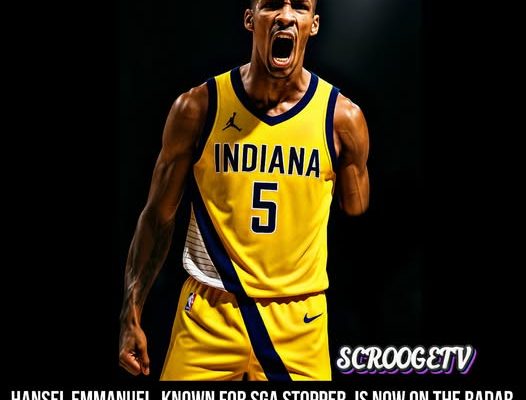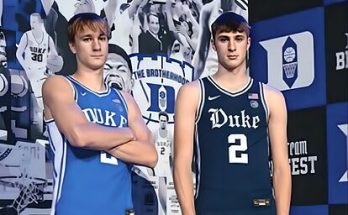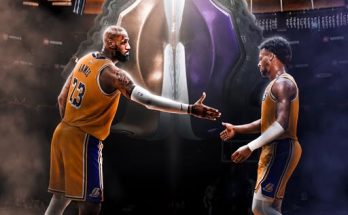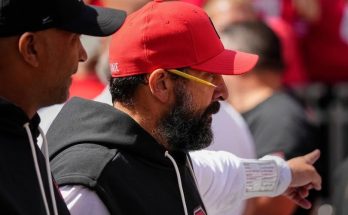Hansel Emmanuel’s journey to basketball stardom reads like a story straight out of an inspirational movie script. From a young boy with a passion for the game, despite facing a life-altering challenge, to now potentially stepping into the professional basketball arena, his path is as compelling as it is instructive. Recently, Emmanuel made headlines when he notably guarded and effectively slowed down Shai Gilgeous-Alexander, the star guard of the Oklahoma City Thunder, in an exhibition game. This impressive feat put him on the radar of multiple NBA teams, with the Indiana Pacers emerging as one of the key franchises showing serious interest in signing him. This development offers not only a thrilling prospect for Emmanuel’s career but also a valuable case study in resilience, skill development, and talent recognition in professional sports.
Hansel Emmanuel’s story begins long before he ever laced up a pair of basketball shoes. Born in the Dominican Republic, he moved to the United States at a young age, where he began playing basketball with the same dreams many kids have: to one day play at the highest level. What makes Emmanuel’s journey extraordinary is that he does it all with just one hand. At age 12, a tragic accident led to the amputation of his left arm below the elbow. While such an event could have deterred most from pursuing competitive sports, it only fueled Emmanuel’s determination to succeed. He did not see his disability as a limitation but rather as a unique challenge to overcome.
His rise through high school basketball was nothing short of remarkable. Playing for a top high school program in Florida, Emmanuel showcased a unique combination of speed, agility, ball handling, and scoring ability that belied the assumption that losing a limb would significantly impede his performance. Scouts and analysts began to take notice not just because of his inspiring story but because of his undeniable talent on the court. His ability to dribble, shoot, and defend with one hand demonstrated an adaptability that was truly impressive. More importantly, his competitive spirit and basketball IQ made him stand out among his peers.
One of the defining moments that brought Emmanuel widespread attention was during a high-profile exhibition game against the Oklahoma City Thunder, an NBA team led by Shai Gilgeous-Alexander (SGA), a young superstar known for his scoring, passing, and defensive prowess. In this game, Emmanuel was tasked with guarding SGA, an assignment that many professional players would find daunting. Remarkably, Emmanuel not only kept up with SGA’s movements but also effectively disrupted his rhythm on offense. This defensive effort went viral and sparked conversations across social media and sports networks, highlighting Emmanuel’s potential to play at a professional level despite his disability.
This moment was pivotal because it served as a tangible demonstration of Emmanuel’s skill set against an NBA-caliber opponent. For scouts and team executives, such performances are invaluable when evaluating whether a player can transition from amateur or developmental leagues into the NBA. The fact that Emmanuel could compete effectively against a top NBA player challenged preconceived notions about what is possible for athletes with physical disabilities and expanded the conversation about inclusivity and talent evaluation in professional basketball.
Following this exhibition, rumors began swirling about Emmanuel’s prospects in the NBA. Among the teams expressing interest, the Indiana Pacers appeared to be one of the frontrunners considering signing him. The Pacers have a history of valuing players with unique skill sets and untapped potential. Their scouting department is known for identifying talent that others might overlook, especially players who bring intangible qualities like resilience, work ethic, and leadership to the team dynamic. Emmanuel fits perfectly into this mold.
The Indiana Pacers’ interest in Emmanuel also aligns with broader trends in professional basketball that emphasize versatility and character. Modern NBA teams are increasingly looking beyond traditional metrics such as height, weight, and raw athleticism. They place a premium on a player’s ability to adapt, their mental toughness, and how they contribute to team culture. Emmanuel embodies all of these qualities. His journey through adversity, combined with his ability to perform at high levels on the court, makes him a symbol of perseverance and innovation in the sport.
If the Pacers do sign Emmanuel, it would be a groundbreaking move in several respects. First, it would represent one of the rare instances where a player with a significant physical disability is integrated into an NBA roster. While there have been inspirational figures in sports history who have played with disabilities, basketball has been less represented in this regard at the professional level. Emmanuel’s signing would not only be a personal achievement but also a milestone for the sport in terms of diversity and inclusion.
Second, the move would challenge teams across the league to reconsider how they evaluate talent. Traditional scouting often focuses heavily on measurable attributes such as vertical leap, shooting percentages, and physical dimensions. Emmanuel’s case encourages a more holistic approach, taking into account intangible factors like heart, determination, and the ability to overcome adversity. It raises important questions about how teams can innovate their scouting processes to uncover hidden gems and provide opportunities for athletes who might otherwise be overlooked.
Third, Hansel Emmanuel’s potential signing could inspire a new generation of athletes facing physical challenges. Representation matters deeply in sports and beyond, and seeing someone with a similar background succeed on one of the biggest stages can motivate countless others. Emmanuel’s story reinforces that limitations can be transformed into strengths with the right mindset and support system.
From a basketball perspective, Emmanuel’s game has evolved significantly over the years. While much of the attention has centered on his defensive capabilities, he is also a highly skilled offensive player. His shooting mechanics, despite using one hand, are fluid and reliable. He possesses excellent court vision and passing skills, making him a threat as both a scorer and a playmaker. His speed and agility enable him to create separation from defenders and finish at the rim with creativity and finesse. Moreover, his conditioning and work ethic are exceptional, often praised by coaches and teammates alike.
One area where Emmanuel may need to adapt further is in terms of endurance and physicality at the NBA level. The professional game is faster and more demanding than high school or college basketball. However, his experience guarding an NBA star like Shai Gilgeous-Alexander suggests that he has the potential to adjust and thrive in more competitive environments. His ability to stay in front of a top-tier player and disrupt their game plan speaks volumes about his defensive instincts and preparation.
The Pacers’ potential acquisition of Emmanuel also fits into their broader team-building strategy. Indiana is a franchise that has been steadily developing young talent while seeking players who can bring energy and leadership to the locker room. Emmanuel’s story and personality align with the team’s emphasis on character and resilience. He could serve as an inspiration to younger players and a rallying point for fans, creating a positive narrative around the team’s commitment to inclusivity and innovation.
From a marketing and community engagement standpoint, signing Hansel Emmanuel could also benefit the Pacers immensely. His story resonates beyond basketball circles and connects with diverse audiences, including people with disabilities, youth sports programs, and advocates for inclusive sports opportunities. The team could leverage Emmanuel’s presence to promote social causes, build partnerships, and enhance fan engagement through storytelling that highlights triumph over adversity.
The interest in Emmanuel also raises important discussions about how professional sports can become more accessible and supportive for athletes with disabilities. While technology and medical advancements have helped many athletes overcome physical challenges, there is still a gap in representation and opportunity at the highest levels. Emmanuel’s rise is a testament to the progress being made but also highlights the need for continued efforts to remove barriers and foster inclusivity.
Moreover, Emmanuel’s journey underscores the critical role of coaching and mentorship. Throughout his development, he has benefited from coaches who believed in his potential and adapted training methods to suit his unique circumstances. This personalized approach allowed Emmanuel to maximize his strengths and develop skills that many would have deemed impossible. For teams like the Pacers, investing in specialized coaching and support for players with unique needs could become a model for integrating diverse talent in the future.
Hansel Emmanuel’s story is also a powerful reminder of the mental aspect of sports performance. Physical talent is crucial, but the psychological resilience to overcome setbacks, maintain confidence, and stay motivated can often determine long-term success. Emmanuel exemplifies these traits, showing how a positive mindset combined with relentless effort can defy odds and break new ground.
In terms of broader social impact, Emmanuel’s potential NBA career could influence how society perceives disability and ability in competitive sports. His presence on an NBA roster would challenge stereotypes and promote a more inclusive definition of athletic excellence. It could encourage more inclusive youth programs, adaptive sports leagues, and accessibility initiatives within basketball organizations at all levels.
The media attention surrounding Emmanuel also illustrates the role of storytelling in shaping sports culture. His viral moments, such as guarding Shai Gilgeous-Alexander, captured imaginations and sparked important conversations. This shows how moments of human triumph can transcend sports and become cultural touchstones that inspire change and progress.
As the Indiana Pacers consider signing Hansel Emmanuel, they stand at the crossroads of innovation, inclusion, and competitive ambition. Emmanuel’s signing would not only add a talented and resilient player to their roster but also position the franchise as a leader in embracing diversity and redefining the boundaries of professional basketball. It would send a powerful message to fans, players, and the broader sports community that talent comes in many forms and that barriers can be broken with determination and support.
Looking ahead, the potential integration of Emmanuel into the Pacers’ roster will require careful planning and support. The team will need to provide tailored training programs, adaptive equipment if necessary, and a supportive environment that fosters growth and confidence. If successful, Emmanuel could pave the way for future athletes with disabilities to pursue professional sports careers without limitations.
In conclusion, Hansel Emmanuel’s rise from a one-handed youth player to an NBA prospect is a story filled with lessons in resilience, innovation, and the evolving nature of talent evaluation in sports. His recent defensive stand against Shai Gilgeous-Alexander spotlighted his capabilities and opened doors to potential professional opportunities, with the Indiana Pacers leading the charge to bring him on board. Beyond the basketball court, Emmanuel’s journey challenges traditional perceptions about ability and inspires a new generation of athletes to dream big regardless of physical challenges. The Pacers’ possible signing of Emmanuel would not only mark a historic moment for the franchise but also set a new standard for inclusivity and human spirit in professional basketball. As the world watches this promising chapter unfold, Hansel Emmanuel reminds us all that greatness often emerges from the courage to overcome the impossible.



